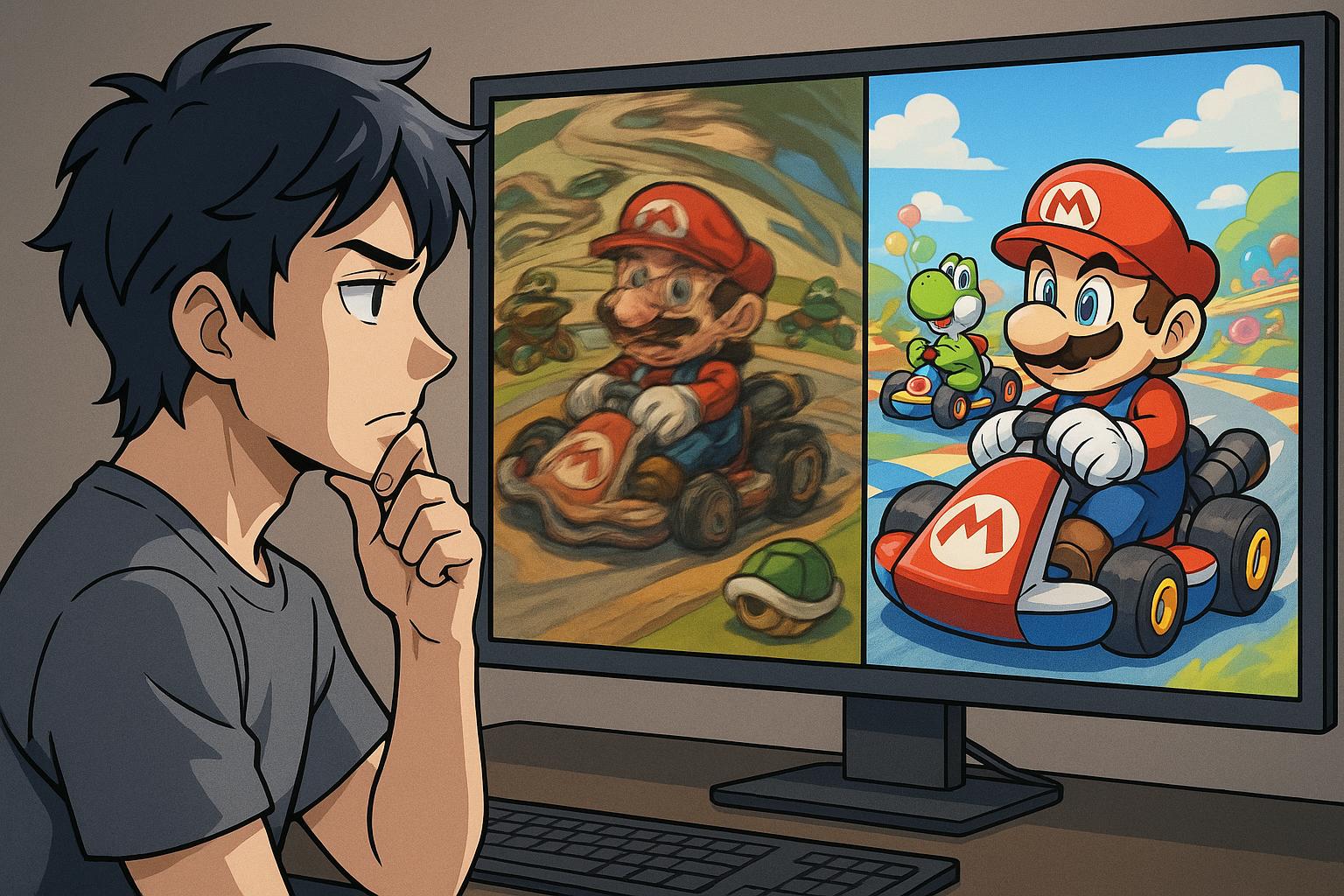When screenshots from Mario Kart World began surfacing online, they were met with immediate speculation about the use of generative AI in their creation. Observers pointed to the peculiarities visible in these images—warped billboards, unusual text placement, and inconsistencies in textures—as signs of AI-generated content. Yet, despite the rapid rise in accusations across social media platforms, Nintendo swiftly refuted these claims, stating unequivocally that no AI-generated imagery was employed in the game’s development. This swift denial, however, did little to quell the surrounding controversy.
The crux of the matter extended beyond the truth of AI’s involvement; it was indicative of a broader cultural shift. The immediate assumption that AI could be responsible for the visual errors reflected a growing societal tendency to interpret creative discrepancies as the handiwork of technology. As the prevalence of generative AI in various industries escalates, audiences have become increasingly adept at recognising its "tells"—the uncanny inconsistencies often associated with AI-produced art. This collective vigilance, however, has fostered an atmosphere of suspicion that even traditional studios like Nintendo cannot escape unscathed.
As the founder of Airship Interactive notes, generative AI should not merely be viewed as another tool in a designer's toolkit; it is a transformative force reshaping the landscape of creativity. Unlike traditional software, which enhances human skill, generative AI can yield results that sometimes eclipse human craftsmanship. In the gaming sector, where creativity and innovation are paramount, this can be both a boon and a challenge. Indie studios are already leveraging AI to streamline processes like pitch development and character modelling, thereby significantly decreasing the time traditionally required for these tasks. However, this efficiency comes with the caveat that AI-generated content lacks the nuanced judgement and artistic intuition that only humans can provide.
The incident with Mario Kart World starkly illustrated the implications of this technological shift. Regardless of whether AI was used in the game's creation, the perception of AI-related faults in the visuals became a core issue. Just as earlier generations grew wary of Photoshop manipulation, today’s audiences may soon adopt a similar scepticism towards AI, framing any visual anomaly as a potential byproduct of artificial intelligence. Consequently, game developers face the pressing challenge of establishing clear communications with their audience regarding the role of AI in their creative processes. Transparency will be crucial, as ambiguity can easily erode trust in both the art produced and the studios behind it.
With these pressures in mind, the discussion surrounding the responsible use of AI in gaming has gained urgency. Key considerations centre around ensuring creative oversight, maintaining thorough documentation of when and how AI has been utilised, and upholding ethical practices in sourcing training data. Such measures are not merely suggestions; they are becoming essential standards for studios aiming to preserve trust and authenticity with their players and peers.
The incident also serves as a poignant reminder of the anxieties that accompany the integration of AI technologies into creative industries. Whilst Nintendo maintains its distinction by steering clear of AI in favour of a human-centred design philosophy, as articulated by gaming legend Shigeru Miyamoto, the industry is still grappling with the implications of generative content. Miyamoto’s statements underscore the importance of preserving the unique essence that defines immersive gaming experiences in an increasingly automated world.
Amid the complexities of AI integration, it is crucial for the industry to engage in open dialogues regarding the implications of these technologies. This involves crafting a shared language around generative art and its role in game development. As discussions evolve, developers must recognise that transparency and ethical considerations are not just pathways to innovation but essential elements in safeguarding the integrity of creativity.
Ultimately, the dialogue about AI in gaming need not be adversarial. Rather than viewing it as a threat, the focus should be on responsibly harnessing its capabilities to elevate creativity. The challenge lies not in the technology itself but in ensuring that developers lead with clarity, respect their audience's perceptions, and continue to nurture the essence of originality that has long characterised the gaming industry.
Reference Map:
- Paragraph 1 – [1], [2], [6]
- Paragraph 2 – [1], [3], [5]
- Paragraph 3 – [2], [4], [7]
- Paragraph 4 – [1], [3], [4]
- Paragraph 5 – [1], [5], [6]
Source: Noah Wire Services
